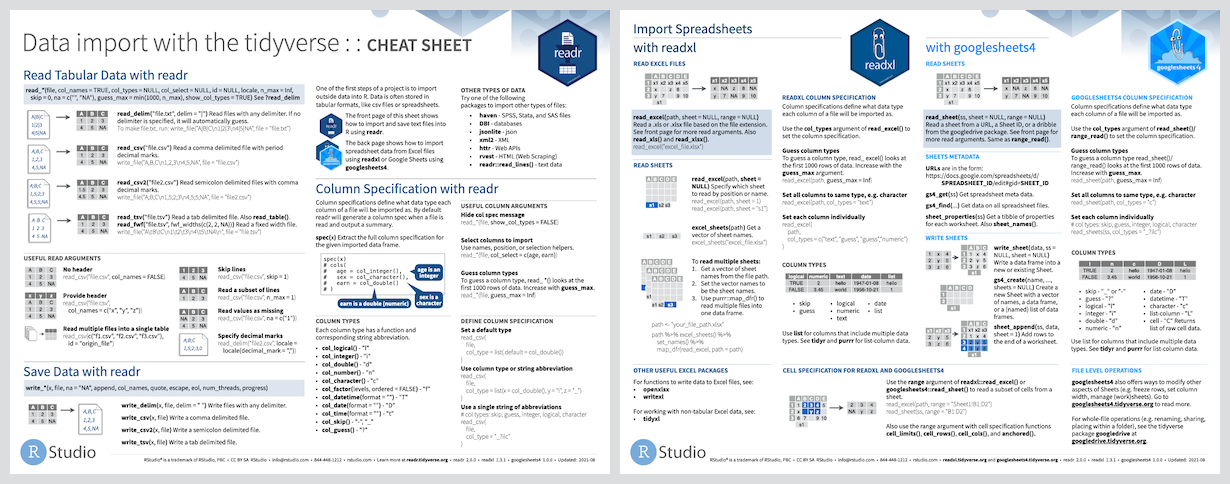Overview
The goal of tidyr is to help you create tidy data. Tidy data is data where:
- Every column is variable.
- Every row is an observation..
- Every cell is a single value.
Tidy data describes a standard way of storing data that is used wherever possible throughout the tidyverse. If you ensure that your data is tidy, you’ll spend less time fighting with the tools and more time working on your analysis. Learn more about tidy data in vignette("tidy-data").
Getting started
tidyr functions fall into five main categories:
“Pivotting” which converts between long and wide forms. tidyr 1.0.0 introduces
pivot_longer()andpivot_wider(), replacing the olderspread()andgather()functions. Seevignette("pivot")for more details.“Rectangling”, which turns deeply nested lists (as from JSON) into tidy tibbles. See
unnest_longer(),unnest_wider(),hoist(), andvignette("rectangle")for more details.Nesting converts grouped data to a form where each group becomes a single row containing a nested data frame, and unnesting does the opposite. See
nest(),unnest(), andvignette("nest")for more details.Splitting and combining character columns. Use
separate()andextract()to pull a single character column into multiple columns; useunite()to combine multiple columns into a single character column.Make implicit missing values explicit with
complete(); make explicit missing values implicit withdrop_na(); replace missing values with next/previous value withfill(), or a known value withreplace_na().
Getting help
If you encounter a clear bug, please file a minimal reproducible example on github. For questions and other discussion, please use community.rstudio.com.
Please note that the tidyr project is released with a Contributor Code of Conduct. By contributing to this project, you agree to abide by its terms.

